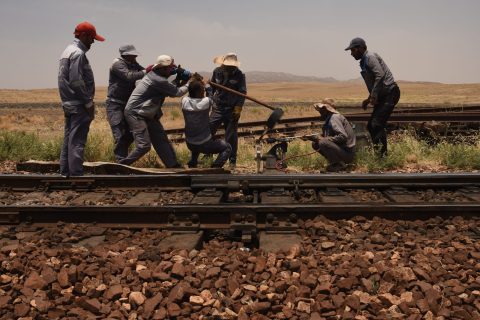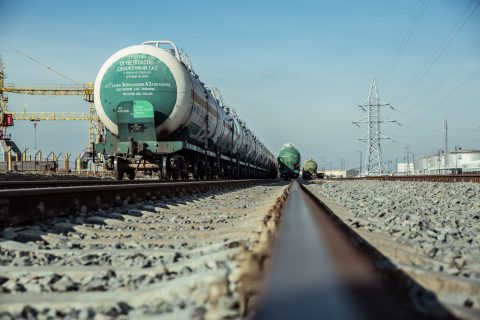Helsinki the next Kaliningrad on the New Silk Road?

Helsinki is well positioned to become the next Eurasian gateway to Europe. If you ask Finnish operators on the New Silk Road, it is already fulfilling the role of a hub. With its close proximity to the Russian border and easy access to European ports, there is certainly a lot of potential for the Finnish capital on the Eurasian corridor. Does it have what it takes to become the next big alternative to the busy Malaszewicze-Brest border crossing?
The demand for an alternative is certainly there. The regular route via Poland is heavily congested. This was reason for Russian railway companies to develop the potential of Kaliningrad as an alertnative gateway several years ago. What started as a trial for several companies in 2017, became one of the most used alternatives in 2020. Also here, multimodality was key.
‘Helsinki is a port’
For Helsinki, a similar path is thinkable. What is very important, is that the rail terminal lies within the port, explained Olga Stephanova during last week’s RailFreight Live. The Russian rail expert works for Nurminen Logistics, a Finnish company operating several services between Europe and Asia.
“The railway ends in the port, and the cargo is easily loaded off the train, on the ship. There are no additional procedures needed. This not only saves time and money, but also keeps the cargo safe. The more the cargo is moved, the higher the risk of damages becomes”, explained Olga Stephanova.
Do you want to watch this edition of RailFreight Live? The show can be found here.
Not just about rail
Just like Kaliningrad, the railway line to Helsinki is a broad gauge line. This means that there is no need for transloading cargo to standard gauge at the border. This is an important advantage, Stephanova explains. Moreover, also here the possibilities for further shipping to European ports are numerous. The addition of a short-sea link to a railway journey has until proven to be a succesfull formula, if it means that congested border crossings are avoided.
“It is not just about rail”, said CEO of Nurminen Logistics Olli Pohjanvirta in the same broadcast. “It is about supply chain management. We deliver door-to-door services, with secured timetables. Not only to and from China, but also the Far East, Scandinavia and Europe. Not only westbound, but also eastbound. We are not talking about a few train departures, we are already operating as a transit hub”, he noted.
China and the Far East
The Finnish company is one of the main players on what is also called the Nordic Silk Road. It started regular services from Finland to Hefei in 2018. In autumn 2020, in cooperation with the Port of Narvik, it started serving the connention to Chongqing with weekly departures. This year, it launched connections to Suzhou, Jinan and Jiaozhou.
Apart from China, it is also focussing on the Far East. Via the Russian port of Vladivostok, it is providing multimodal services to Japan, Vietnam, and Singapore. All of the cargo is collected in Valdivostok, where it can be loaded onto a single train for the journey to Europe. “Since June, we are also offering this service eastbound”, says Stephanova. “There is a huge demand for this connection.”
The salmon train
The role of Finland is not only important for EU countries, and the mentioned cooperation with the port of Narvik is not a coincidence. The Norwegian port has big plans for the railway connection to China too, and relies on a smooth transit through Finland. In 2019, responding to the lifted ban on the Russian transit of fresh goods, it started preparing for the shipment of frozen salmon from Norway to China.
Large amounts of salmon would have been on the train by now, if it was not for the corona virus to put a break on the plans. The pandemic delayed the launch of the service, and when it was finally about to be launched in October 2020, restrictions were put in place on transport of reefer containers to China. “These restrictions are still in place until now”, said Pohjanvirta. “We are ready, but we are waiting for these restrictions in China to be lifted.”
Also read:
- Railgate Finland in Kouvola thinks big and this is why
- From Atlantic to Pacific by rail and still fresh
- Fresh Norwegian salmon on the train to China
- Kilometre-long trains and no gauge switch: this is Railgate Finland
You just read one of our premium articles free of charge
Want full access? Take advantage of our exclusive offer





